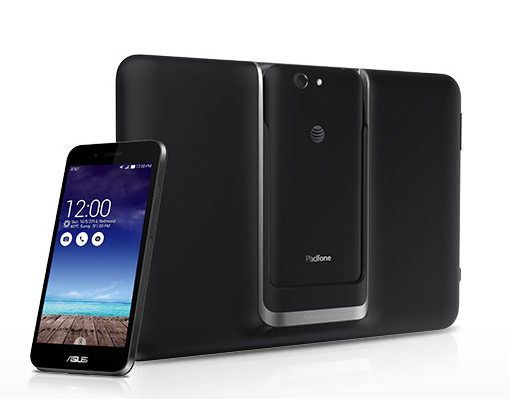Asus' PadFone X Finally Gets a Price on AT&T
We first saw the PadFone X back in January at the Consumer Electronics Show. The first Padfone for the U.S. market, the Padfone X featured a companion tablet docking station and was headed for AT&T. The only issue was Asus couldn't tell us when AT&T would be getting the phone. Now, AT&T has announced that the PadFone X will finally become available roughly six months after it was first introduced at CES.
AT&T this morning announced that customers will be able to pre-order the PadFone X as of June 6. The phone will be priced at $199 with a two-year contract.
"We are proud to add the innovative ASUS PadFone X to AT&T's leading device portfolio," said Jeff Bradley, senior vice president of devices at AT&T. "PadFone X provides tremendous value and flexibility to consumers. It combines a powerful smartphone with a 9-inch PadFone station and runs on the network that covers more than 99 percent of all Americans."
The phone packs a 5-inch full HD display with a 1080 x 1920 resolution (441 ppi), a Snapdragon 800 CPU (2.3 GHz Krait 400), Areno 330 graphics, 2 GB of RAM, 16 GB of storage, up to 64 GB of external storage via MicroSD, and a 13-megapixel camera with LED flash and autofocus (there's also a 2-megapixel lens up front). The whole thing runs on Android 4.4 KitKat.
Back at CES, Asus emphasized the phone's use of LTE-Advanced technology, Voice over LTE (VoLTE), HD Voice (all enabled via AT&T's 4G LTE network) and mobile payments via NFC and AT&T's Isis Mobile Wallet payments system. From the get go, this has been a collaboration between AT&T and Asus as opposed to the carrier just agreeing to carrier an already developed phone. We're excited to see the results of that kind of partnership.
Follow Jane McEntegart @JaneMcEntegart. Follow us @tomshardware, on Facebook and on Google+.
Get Tom's Hardware's best news and in-depth reviews, straight to your inbox.

Jane McEntegart is a writer, editor, and marketing communications professional with 17 years of experience in the technology industry. She has written about a wide range of technology topics, including smartphones, tablets, and game consoles. Her articles have been published in Tom's Guide, Tom's Hardware, MobileSyrup, and Edge Up.
-
csbeer ' 5-inch full HD display with a 1080 x 1920 resolution (441 ppi)' - What's the point? The human eye can't tell the difference past ~330dpi?Reply -
Nuckles_56 Reply' 5-inch full HD display with a 1080 x 1920 resolution (441 ppi)' - What's the point? The human eye can't tell the difference past ~330dpi?
More to the point then, why are we seeing displays which are even higher resolution?
